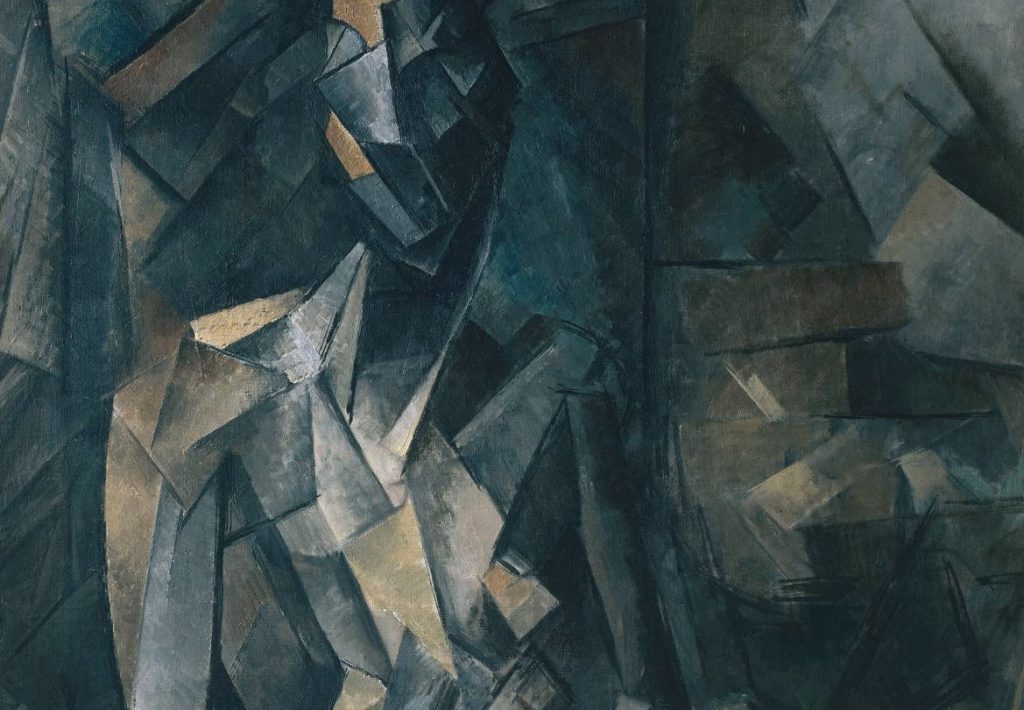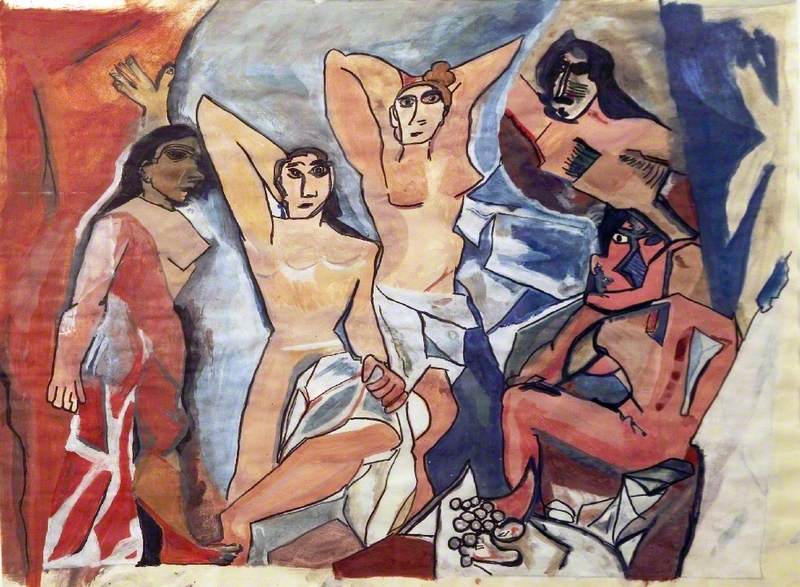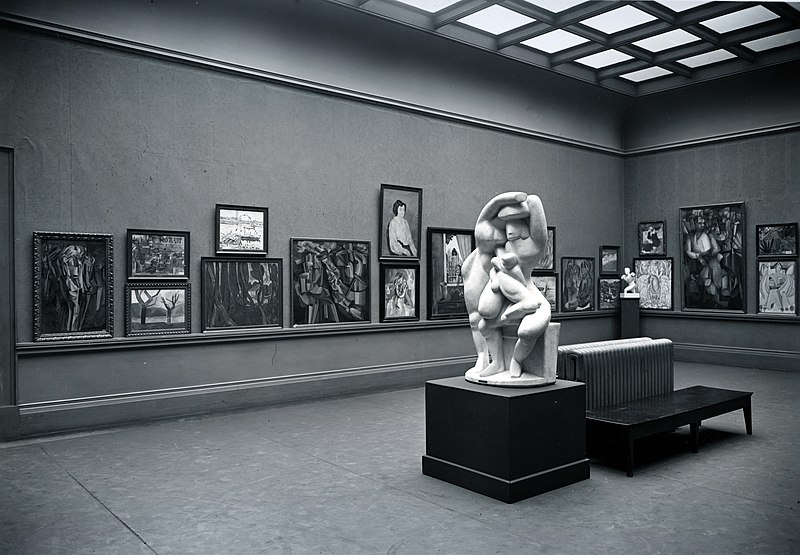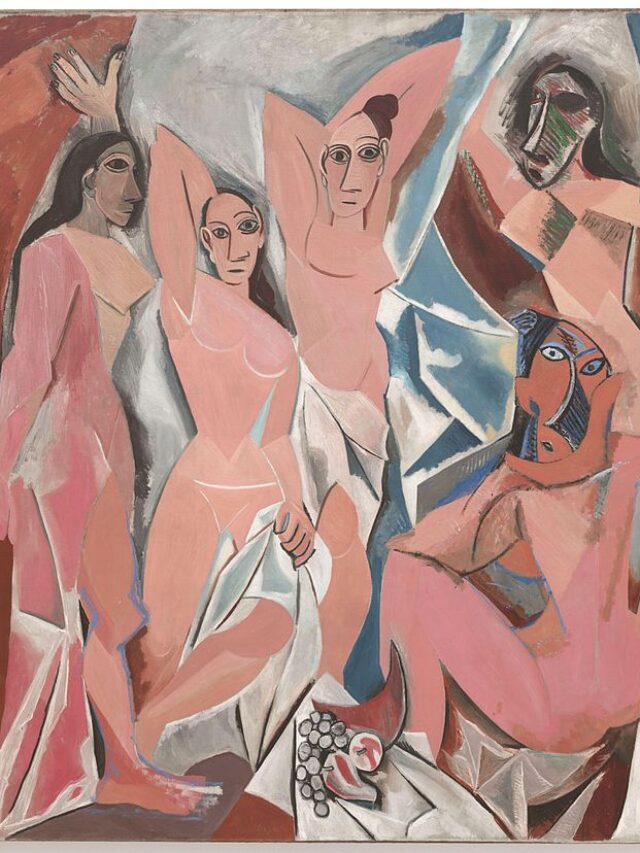What brings cubism to Western art? Many arguments are readily available about the origin and reception of cubism in art history. Since the Renaissance, artists have tried to depict expression from a specific, one-point perspective; spectators can see the painting or artwork from different perspectives at distinct points. Cubism then questions and rejects this view, bringing a new mode of viewing things as abstract and flowing from pointless to the point.
Cubist works simultaneously reflect the shapes and surfaces of objects from several viewpoints, making our perception of reality dubious and distorted. At shallow angles to the image surface, objects are “analysed” in terms of their facets and do not go out of sight. Some academics contend that the Industrial Revolution had an impact on and influence on Cubism. One sure thing is that Cubism emerged from the yearning for something novel; more precisely, it emerged from the realisation that humans are fallible beings and that reality differs significantly from what we consider trustworthy from one viewpoint to another.
Cubism significantly impacted the development of what is now understood as the modernist process, which was revolutionary for art at the time. The cubists opened our eyes to new concepts regarding how we see objects physically and how we perceive reality overall, realising that one cannot represent reality without first understanding an object since reality is composed of various perspectives on the same object.
In 1910, modern art schools were founded to represent objects through the synthesis of those objects into geometric shapes. Cubism is an art form that focuses primarily on forms; once a form is achieved, it is meant to exist. Cubism has been associated with mathematics, trigonometry, chemistry, psychoanalysis, music, and other subjects to provide a more direct understanding. All of this has been sheer fiction, not to mention absurdity, that produced adverse effects and made people blinded by notions. Cubism has never pretended to transcend painting’s bounds; instead, it has stayed inside them.
Cubism: Theory
Carl Einstein was a well-known German Jewish author, critic, anarchist, and art historian. His most sophisticated analysis of the subject to that point was on the art, about which he wrote extensively and about which he is considered one of the most critical early observers. He is one of the first critics to recognise the evolution of Cubism.

Because they pay more attention to the changing legal issues surrounding their paintings, the account of cubism’s stylistic development is more compelling, subtle, and concrete. As an explanatory model, Einstein’s understanding of cubism might be faulty. However, it is the only early analysis of this work of art that fully captures the radical implications of cubist representation since painting has the power to profoundly transform our understanding of art and our perception of the visual world, changing our subjectivity in the process.
In his classic essay ‘Totality (1914-16), Einstein wrote about cubism in his classic essay and analyzed cubism as ‘the memory of all previously seen art weighs on the viewer when one looks at an individual picture or absorbs an impression of nature. Art transformed all-seeing; the artist determines our common mental images of the visual world. Hence, it is art’s task to organize them. To structure the collective eye, laws of seeing are necessary for assessing the material of physiological seeing to endow it with human significance’.
For Einstein, laws of art do not originate from the concepts that constitute the basis of aesthetic judgments; instead, laws of art are based on the primary forms that underlie a potential artwork. Under the influence of philosophy, one over-estimated the doctrine of aesthetic judgment, making it the foundation of aesthetics, believing that on this basis, one could establish what was specific to art.
Einstein foresaw the state of our knowledge about the visual brain and provided a crucial counterbalance to neuroscientists trying to use their findings to create art. Einstein’s reading of cubism has essential ramifications for these developing disciplines and constructively muddies our understanding of how the visual brain functions regarding artistic endeavours.
Logical conformance is a universal law; we cannot view and understand the artwork via a logic-based lens. Logic is a specialised science, much like physics or any other, with its proper objects, but it dares not falsify those things by turning them into the subject matter of general science.

As the main focus of most early commentary, Einstein’s understanding of the relevance of many viewpoints in cubist paintings was radically novel within the critique of cubism itself. However, the primary distinction between them arises from visual memory. Cubism resolved the tension between representation and structure by forgoing the object’s distortion in favour of an abstract geometric grid into which realistic details and occasionally words were incorporated as clues. The title of the image and the realistic details brought back recollections of the familiar object world for the viewer.
According to Einstein, it is precisely these kinds of mental representations that keep us from having a direct and concrete vision: “In actuality,” the author states, “we do not first perceive everything clearly and directly with our eyes; instead, we rapidly identify a cumulative memory image with a recognised visual stimulus that masks the genetic stimulus with a consistent and all-encompassing image.
Einstein brings the idea of psychology to understand Art and argues that Psychology is nothing but a reaction against logic; one hopes to obtain more definitive results if one constructs individual capacities or functions.
In another essay on ‘Cubism, Einstein writes ‘, Art is idolised by those who, adrift and helpless, are victims of dubious authority; anyone moderately unbiased who concerns himself more seriously with it knows of its often downright childish ineffectuality, so, astonishingly, several strong, not exorbitantly stupid individuals even to this day try to produce Art. In general, one values art because doing so carries no obligations.
Cubism and Artist

Pablo Picasso and Georges Braque founded the Cubist movement in the visual arts, which focused on the flat, two-dimensional, fractured surface of the picture plane and rejected perspective, foreshortening, modelling, and chiaroscuro in favour of geometric forms. Compare and contrast these two paintings. Talk about the texture, point of perspective, theme, scale, degree of abstraction or naturalism, use of colour, representation of light and space, the relationship between figures and ground, shapes and lines (repetitive, geometric, or organic) (repetitive shapes, geometric or organic).
Georges Braque (1882-1963) was an artist from France; his development of what became known as Cubism was his most significant contribution to art history. Pablo Picasso, who worked with Braque, left his mark on both artists’ creations. The synthesis, or combining, of the shapes in the image is emphasised in works from this epoch. The piece relies heavily on colour; shapes are larger and more ornamental, and collage is frequently used, all while remaining fractured and flat.
The Cubists’ art reflected these audacious and revolutionary trends. The artwork is confidently and ambiguously done. Art and design were eternally altered thanks to cubism’s bold ideas to paint beyond what is typically seen. The trend of continuously attempting to portray what the rest of the world’s civilizations had already done was broken by cubism. It caused artists to believe that art could be even more exquisite and intricate than any traditional still life could have been. It was modernity in its purest form.






